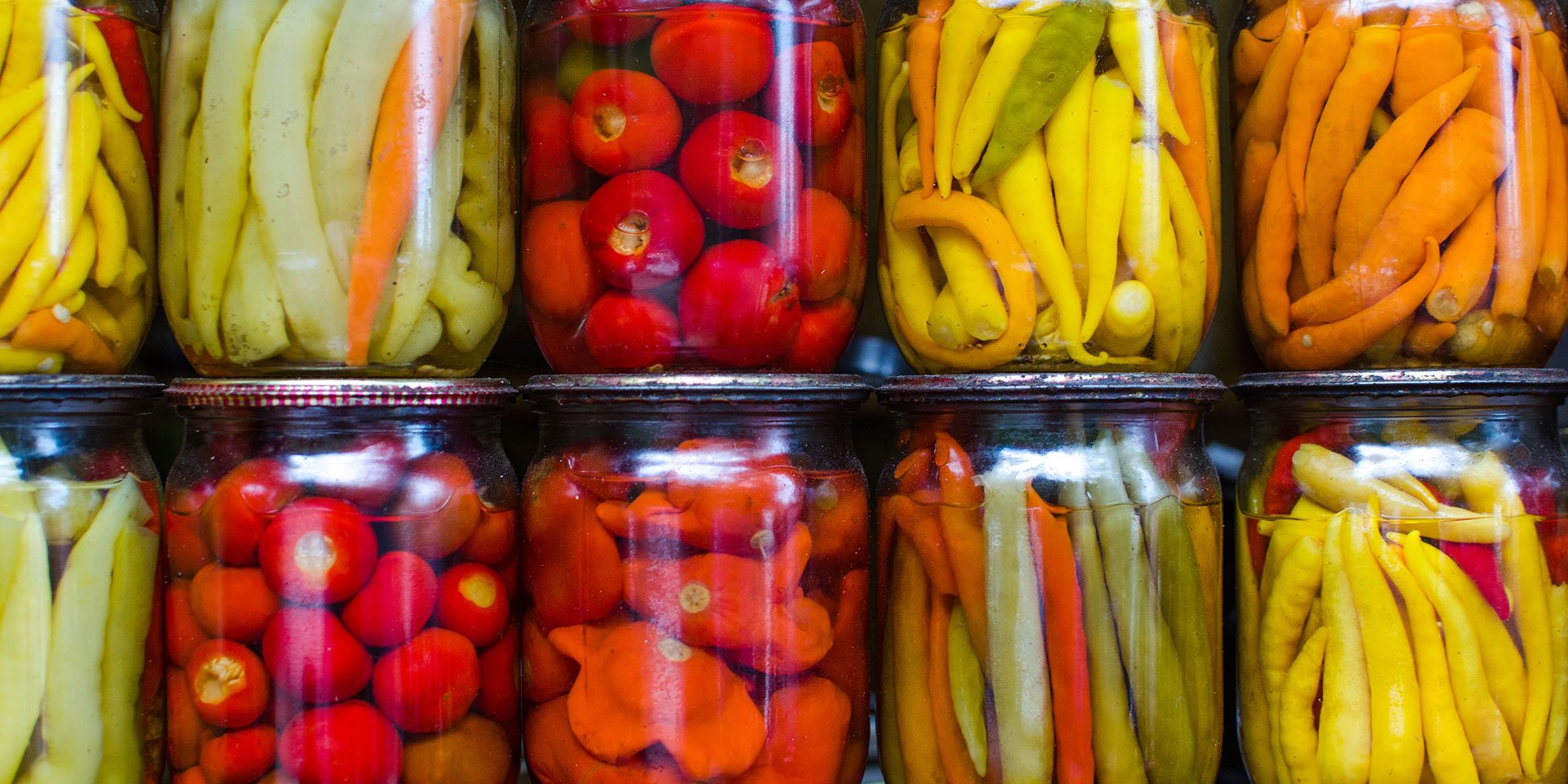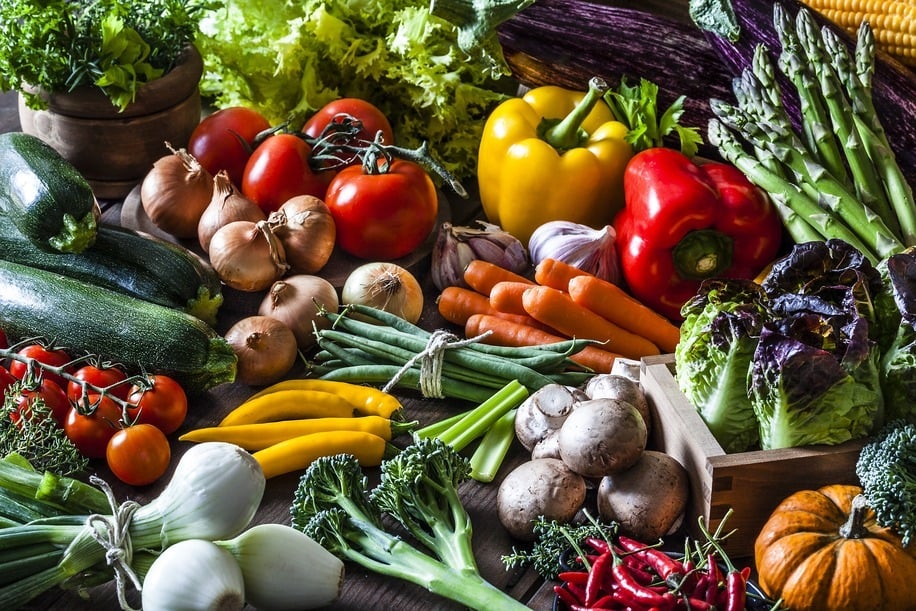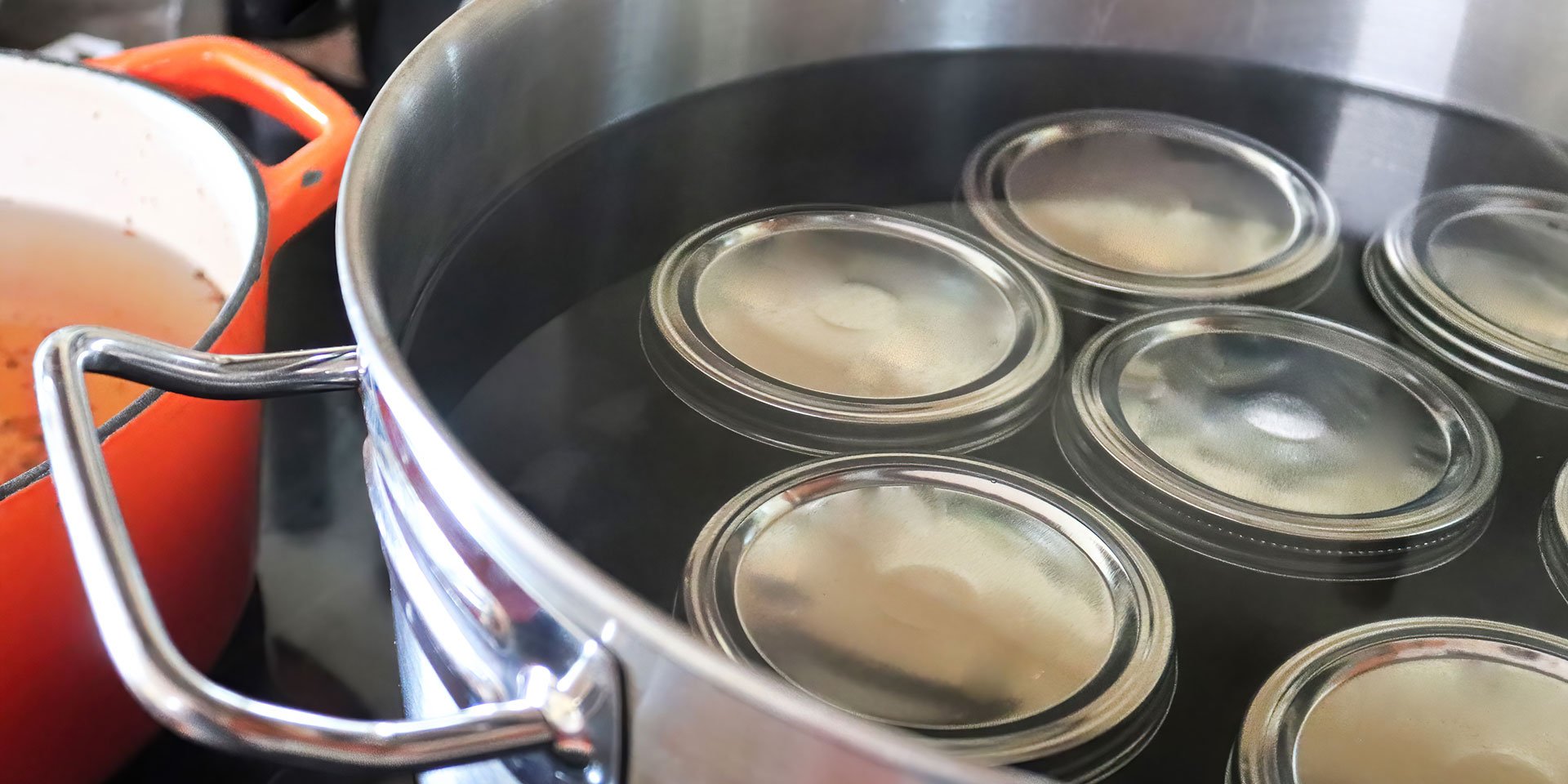Looking to jar up the season? Try a canning club
Cherries, tomatoes, cucumbers and peaches. It always seems the season is short for some of our most beloved summer fruits and vegetables. And while we’ve shared our favorite ways to extend the season through preservation methods such as water bath canning, freezing and dehydrating, doing all of this takes time that is often also in short supply during the warm summer months.
So, how can you get all your home preservation projects completed during a season that is often filled with vacations and trying to cram in every last minute of fun?
Host a canning club!
What is a canning club?
Similar to other hobby-based groups, such as book clubs, running clubs and garden clubs, a canning club is a way to gather people around a common interest, specifically home preservation and canning. As part of a canning club, members meet on a defined schedule to share knowledge, skills and, of course, preserve different recipes and foods.
Why a canning club?
Canning fresh produce allows you to enjoy seasonal flavors year-round while also helping you avoid food waste. Couldn’t resist those perfectly ripe strawberries at the farmer’s market but can’t use them all before they go bad? You will be happy to eat them as jam or strawberry syrup in the depths of winter. Canning in a group may also allow you to preserve more volume and variety of foods than if you were doing the process all on your own.
How to start a canning club
Invite friends and community members
It’s up to you to decide how many members you want to participate in your canning sessions, but you’ll want to consider some practicalities like available cooking space, equipment needed and how involved each member should be. If this is your first time hosting a group canning session, we recommend keeping the group smaller — 4 to 6 people is ideal. Once you have a few sessions under your belt, you may want to invite new members to share all you have learned about home preservation so far.
While it’s not required that every member have canning or food preservation knowledge, it may help if at least one person has canned before. Experienced or not, we recommend that everyone brushes up on safe canning practices before your first meet-up. The National Center for Home Food Preservation is the go-to source for many home preservers; it is run by food scientists from the University of Georgia with backing from the USDA. You can find tested recipes, safety tips and step-by-step home preservation guides on their site.
The University of Georgia Extension also has several YouTube tutorials and videos that answer common questions that may arise during the canning process, such as how best to sterilize your canning jars or what to do if they don’t seal. If you have more specific questions, reach out to your local extension office, which can help answer them.
Make a wishlist of foods to preserve
Once your member list is set, it’s time to dream big! Discuss the goals that each person has for the canning season and what types of foods and preparations they would like to focus on. Perhaps your canning club group will be jam-only, focusing on sweet recipes like spiced blueberry jam and plum jam, or savory preparations such as caramelized onion jam or spiced tomato jam. Or perhaps everyone is in for pickling everything all season long.
Need some inspiration? Use our Seasonal Food Guide to see what’s in season near you so you can be sure to preserve produce at its peak.
Figure out where and how often you should meet
While almost any home kitchen can be used for canning, depending on the size of your group, you may want to explore using a community kitchen that can accommodate more people. Another great option — if you have a large group or just want to enjoy the sunshine — is to set up your canning station outside.
Depending on the group’s desires for what to can and how much, make a plan for how often you’ll need to meet to accomplish your goals. Meeting once a month during the growing season may let you preserve a wider variety of seasonal fruits and vegetables and be most accommodating to members’ busy schedules. Another option is to set aside a month where members can meet a few hours every week for canning together. This is ideal if the group wants to focus on one core product, such as tomatoes.
Gather equipment and supplies
For those who are new to canning, it may seem like the process requires a bunch of specialized equipment and tools. As we outlined in our tips for water bath canning, however, you probably already have most of what you need in your kitchen. Make a list based on where you’ll be canning, the number of members in your club and the types of recipes you’ll be preserving. For instance, portable burners are a must-have if you choose to meet outside, but are something you can probably skip if you are canning inside on a stove and have enough space for the amount you are canning.
In addition to more obvious canning equipment, think of items that might help make the whole process smoother and easier. Plan to make a lot of cherry jam or apple butter? You may want to invest in a cherry pitter or an apple corer, respectively, to help speed up the process.
If you’ve created your equipment list and still need to fill some gaps, consider checking out your local library. Many libraries now offer canning supplies as part of their Library of Things collection, providing a cheaper and more sustainable alternative to buying new.
Aside from the equipment, you will need to procure the produce you will use to make your recipes. Of course, we always recommend buying local when possible. Check out your community farmers’ market to buy any seasonal ingredients — you may even be able to purchase a specific fruit or vegetable in bulk if you speak with the vendor at the market. And if any of your canning club members are also avid gardeners, have them bring their latest harvest. It’s a great way to reduce garden waste and keep your products as local as possible.
Lastly, don’t forget about snacks! Members should plan to bring light bites to the canning session; having food on hand keeps everyone happy, especially if you are making several recipes or large batches and your canning session will go on for a few hours.
Get canning!
Once the meeting day arrives, be sure to go through all of the final details to ensure a smooth — and fun! — canning club experience. As guests arrive, you may also want to make a plan for delegating tasks; giving each person a dedicated job — which you can rotate through if you wish — will allow the group to function efficiently, sort of like an assembly line. Here are a few examples of tasks that members can take on:
- Washing and preparing fruits or vegetables according to the recipe
- Cleaning and sterilizing canning equipment (jars, lids, funnel, ladle, etc.)
- Cooking the recipe at the stove (adding additional ingredients, stirring, and so on)
- Filling the jars, placing them into the canner and setting a timer
- Making labels for the jars once they are dry
Set up your canning stations so that everyone is able to participate and quickly access the tools and equipment they need — and be sure to set up a composting bin for any scraps!
Looking for more inspiration or need ideas to get started? Head to FoodPrint’s Instagram this August — we’ll be sharing our favorite canning and home preservation tips all month long.
Canning books we recommend
One of the most important steps in the canning process is using a reliable and well-tested recipe. Here are some of our favorite preservation cookbooks that home canners (ourselves included) go back to time and time again.
- “The All New Ball Book of Canning and Preserving: Over 350 of the Best Canned, Jammed, Pickled, and Preserved Recipes”
- “So Easy to Preserve” by University of Georgia Extension
- “Naturally Sweet Food in Jars” by Marisa McClellan
- “The Complete Book of Small-Batch Preserving” by Ellie Topp and Margaret Howard
- “Put ‘em up! A comprehensive home preserving guide for the creative cook” by Sherri Brooks Vinton
- “The Joy of Pickling, 3rd Edition: 300 Flavor-Packed Recipes for All Kinds of Produce from Garden or Market” by Linda Ziedrich
- “America’s Test Kitchen Foolproof Preserving & Canning: A Guide to Small Batch Jams, Jellies, Pickles & Condiments”
Get the latest food news from FoodPrint.
By subscribing to communications from FoodPrint, you are agreeing to receive emails from us. We promise not to email you too often or sell your information.
Top photo by Elena Ray/Adobe Stock.
More Reading
The FoodPrint guide to beans: Everything you need to know to buy, cook, eat and enjoy them
November 18, 2025
Your guide to buying and preparing a heritage turkey or pastured turkey this Thanksgiving
November 18, 2025
How Miyoko Schinner upped the game for vegan dairy
November 7, 2025
30+ things to do with a can of beans
November 4, 2025
In a beefy moment, beans?
November 4, 2025
Waste not, want not with “Ferment,” a new cookbook by Kenji Morimoto
October 1, 2025
For these cocoa farmers, sustainability and the price of beans are linked
September 17, 2025
You haven’t had wasabi until you’ve had it fresh — and local
September 11, 2025
How to make your kids’ school lunch more eco-friendly
August 19, 2025
No-cook meals: 40+ ways to enjoy peak summer produce without turning on your stove
August 12, 2025



